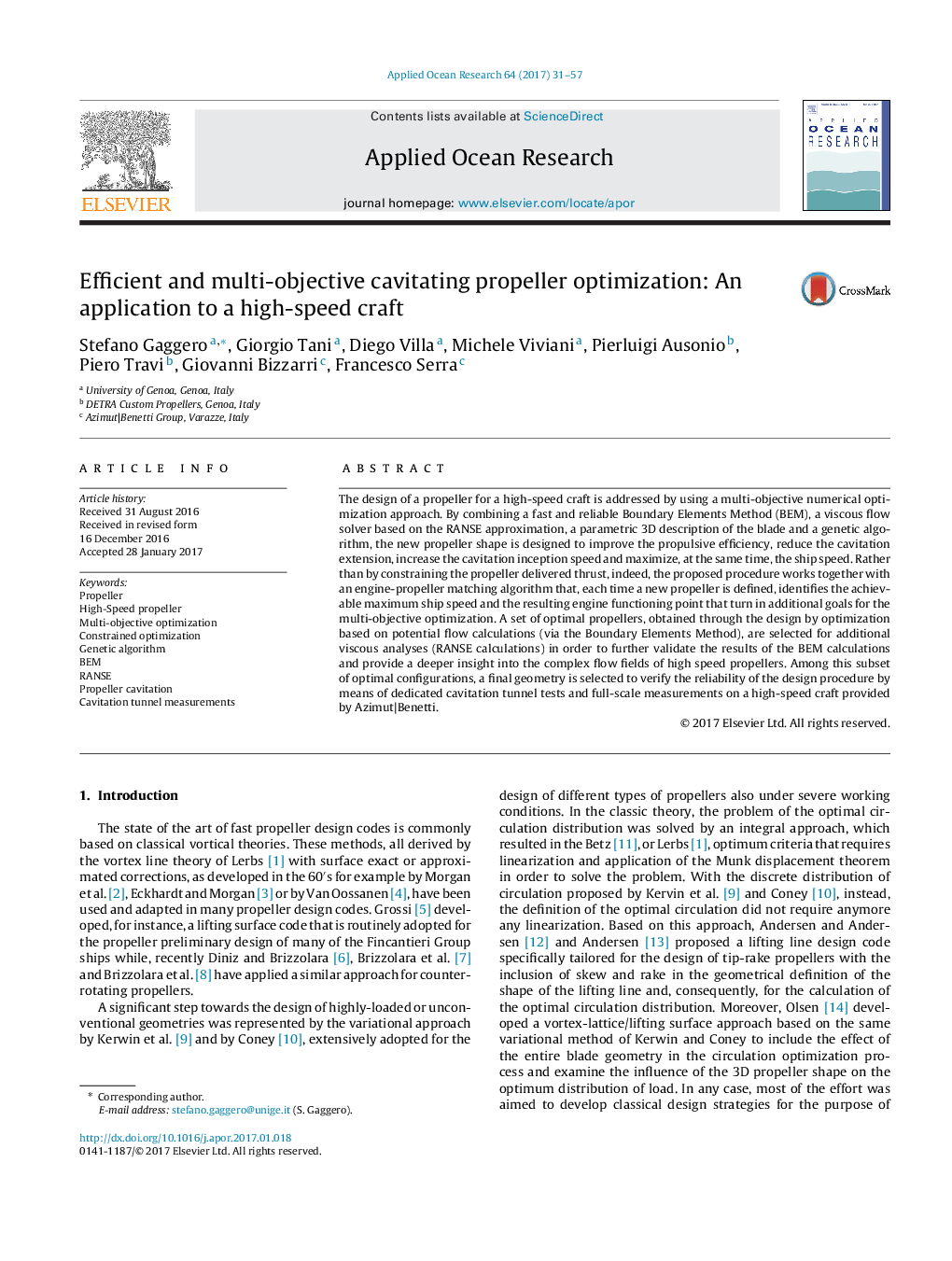| Article ID | Journal | Published Year | Pages | File Type |
|---|---|---|---|---|
| 5473182 | Applied Ocean Research | 2017 | 27 Pages |
Abstract
The design of a propeller for a high-speed craft is addressed by using a multi-objective numerical optimization approach. By combining a fast and reliable Boundary Elements Method (BEM), a viscous flow solver based on the RANSE approximation, a parametric 3D description of the blade and a genetic algorithm, the new propeller shape is designed to improve the propulsive efficiency, reduce the cavitation extension, increase the cavitation inception speed and maximize, at the same time, the ship speed. Rather than by constraining the propeller delivered thrust, indeed, the proposed procedure works together with an engine-propeller matching algorithm that, each time a new propeller is defined, identifies the achievable maximum ship speed and the resulting engine functioning point that turn in additional goals for the multi-objective optimization. A set of optimal propellers, obtained through the design by optimization based on potential flow calculations (via the Boundary Elements Method), are selected for additional viscous analyses (RANSE calculations) in order to further validate the results of the BEM calculations and provide a deeper insight into the complex flow fields of high speed propellers. Among this subset of optimal configurations, a final geometry is selected to verify the reliability of the design procedure by means of dedicated cavitation tunnel tests and full-scale measurements on a high-speed craft provided by Azimut|Benetti.
Keywords
Related Topics
Physical Sciences and Engineering
Engineering
Ocean Engineering
Authors
Stefano Gaggero, Giorgio Tani, Diego Villa, Michele Viviani, Pierluigi Ausonio, Piero Travi, Giovanni Bizzarri, Francesco Serra,
